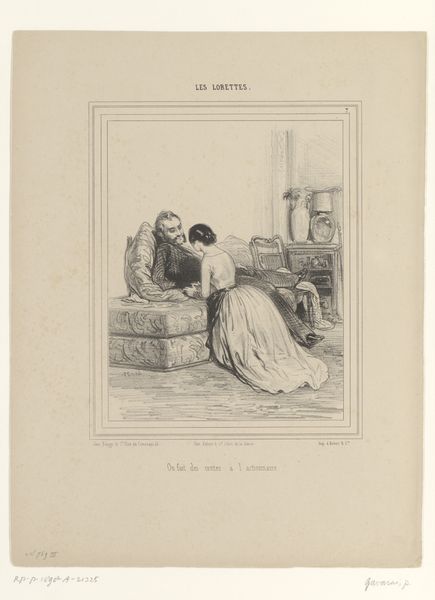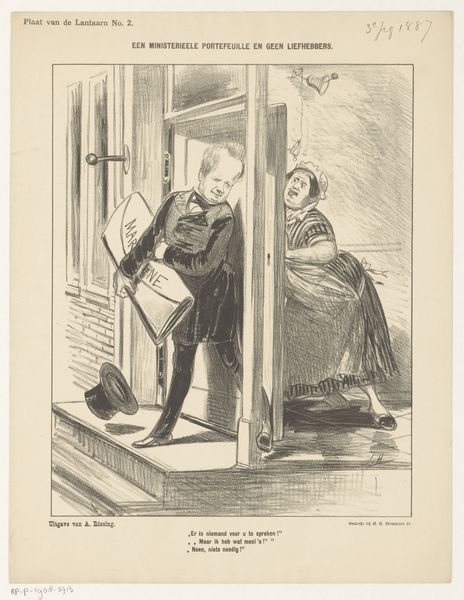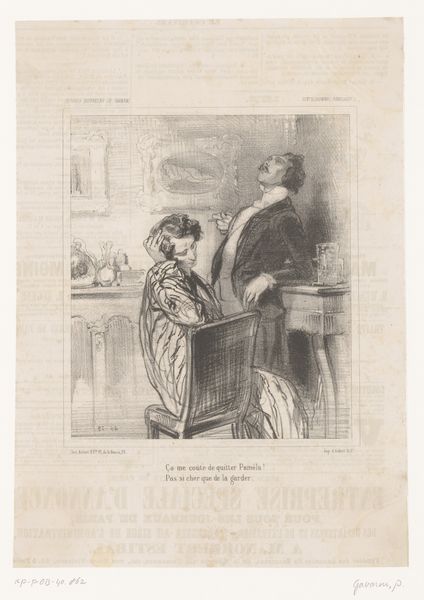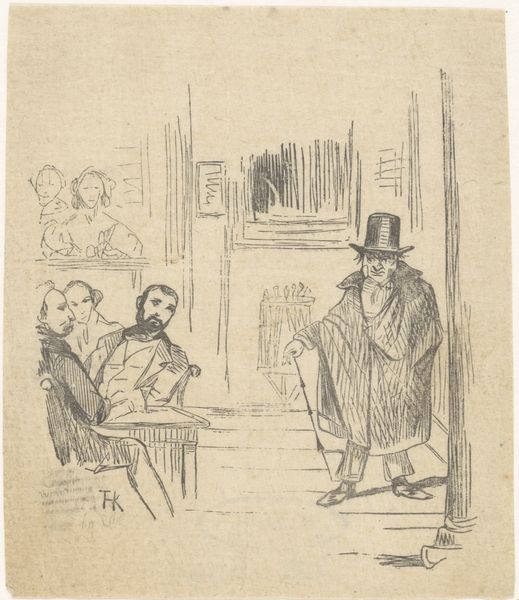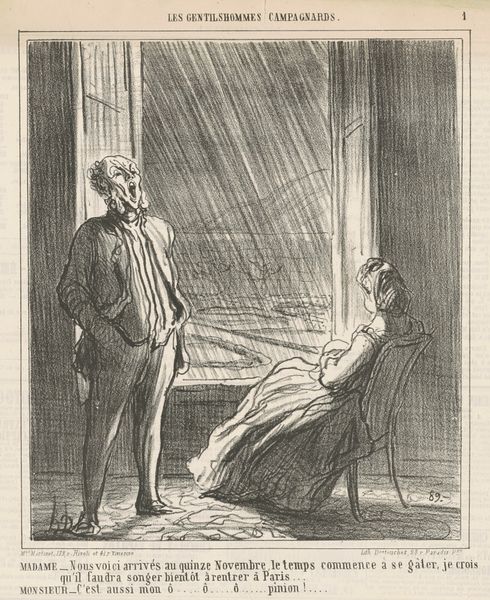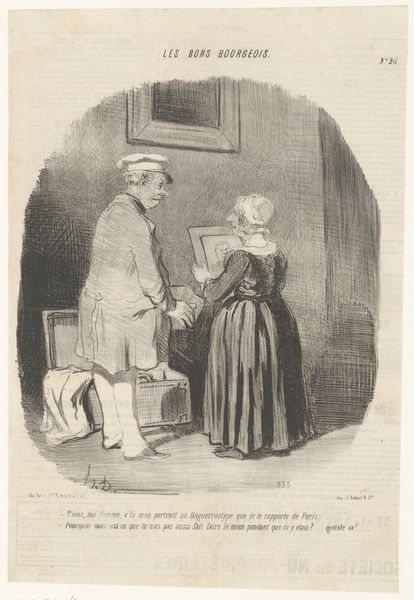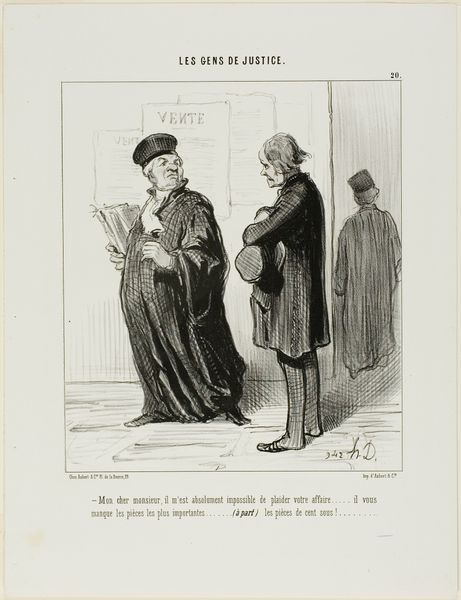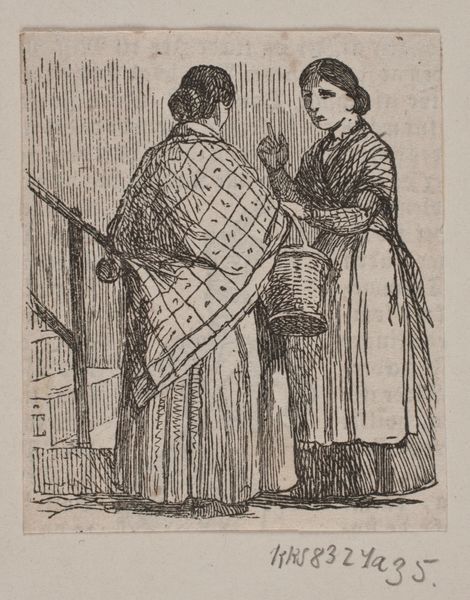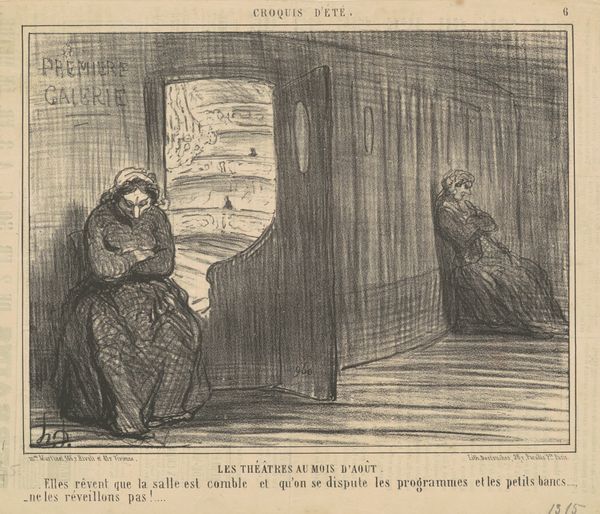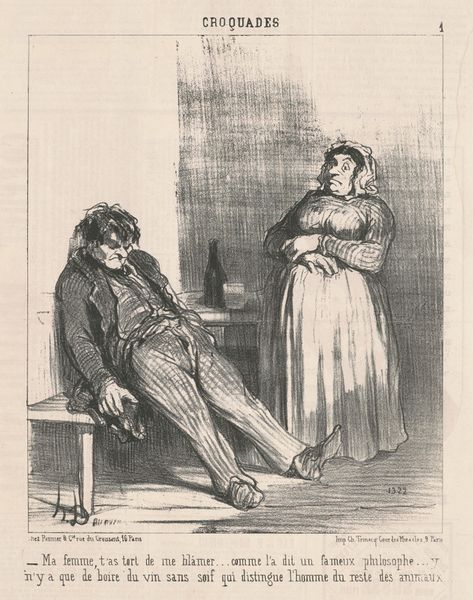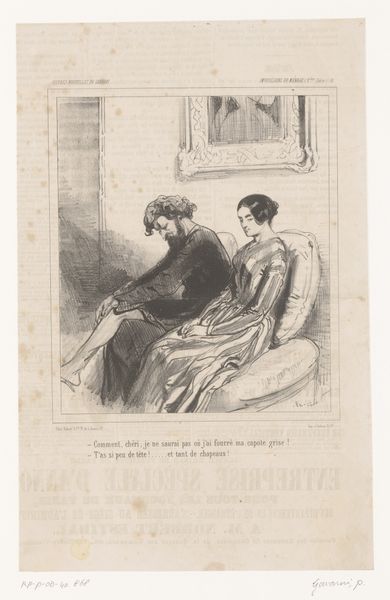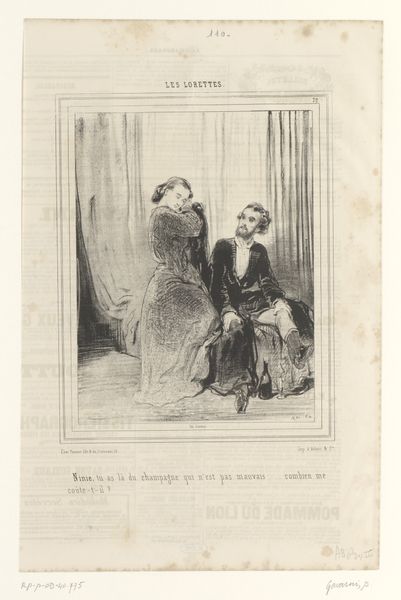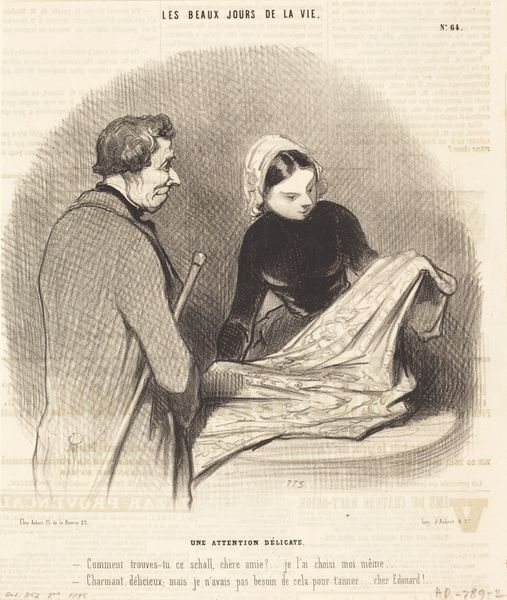
Dimensions: height 399 mm, width 278 mm
Copyright: Rijks Museum: Open Domain
Curator: This compelling pen and ink drawing, a caricature of Émile Zola, dates to 1898, created by Jean-Louis Forain. It definitely catches the eye, wouldn't you say? Editor: Absolutely. There’s a real sense of tension radiating from this piece. Zola looks…deflated almost. And the woman behind him has this formidable, stoic stance. There's something brewing here. Curator: Forain, of course, was deeply embedded within the Parisian art scene. It’s fascinating to consider this work in light of Zola’s role in the Dreyfus Affair. Remember his famous open letter, "J'accuse…!" which fiercely criticized the French government. Editor: Ah, now it clicks. The woman embodies the public's divided opinion. That stern look conveys skepticism and judgment. This caricature becomes not just about Zola the individual, but about the weight of public opinion on one's character and political standing, particularly when challenging established powers. Curator: Precisely. And considering the socio-political landscape of late 19th century France—the intense nationalism, anti-Semitism... Forain cleverly captures this turmoil in a few quick strokes. Zola’s defiance placed him in a precarious position, didn’t it? His very identity became contested. Editor: And you can see it. The droop of his shoulders, the downcast gaze. He’s isolated, carrying the burden of truth on his shoulders. Even his oversized feet convey a sense of precariousness; his stance looks quite unsteady. It reflects a broader theme about the vulnerability of marginalized voices and activists against entrenched systems. Curator: Well said. It really speaks to the complex intersections of politics, public perception, and the personal toll activism can take. Even seemingly simple pieces like this can provide so much food for thought about what it means to engage with systems of power. Editor: Indeed. Forain uses humor as a potent tool. The visual hyperbole allows us to confront uncomfortable truths about power, prejudice, and the enduring challenges faced by those who dare to speak out. It is quite poignant, really.
Comments
No comments
Be the first to comment and join the conversation on the ultimate creative platform.

